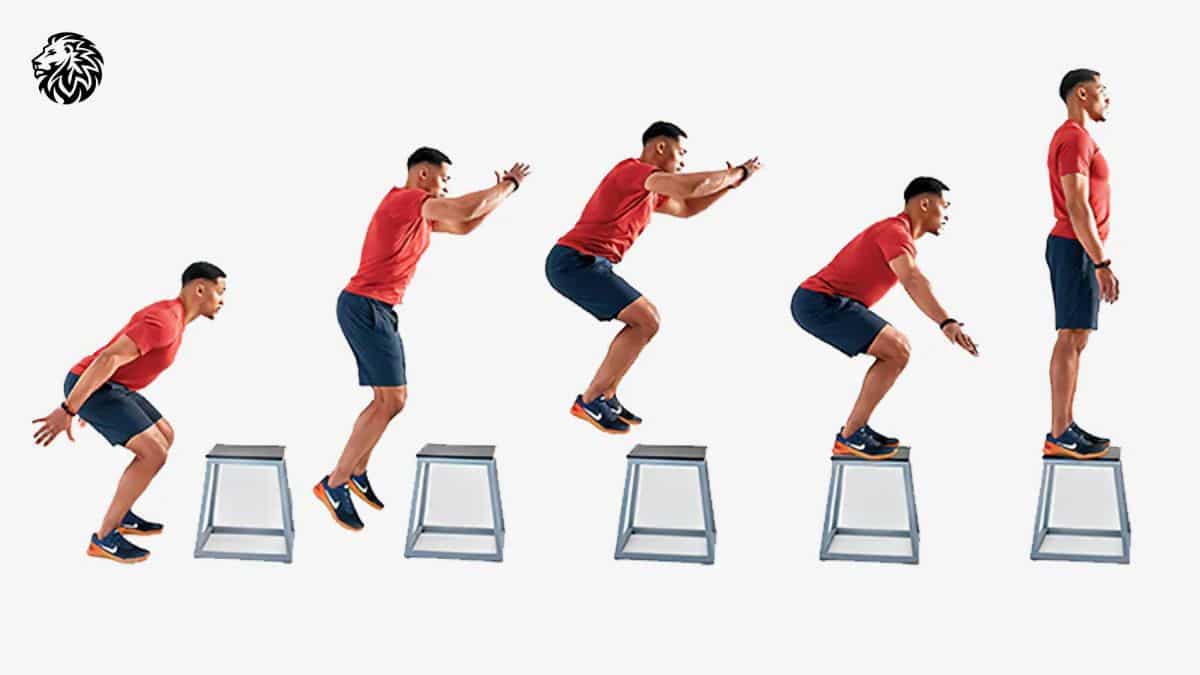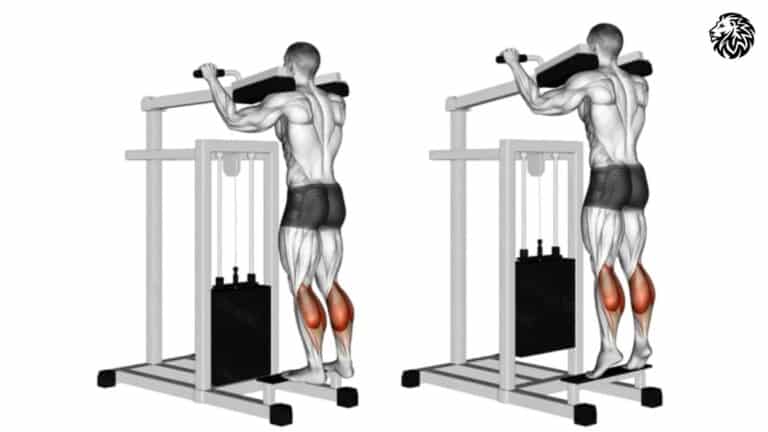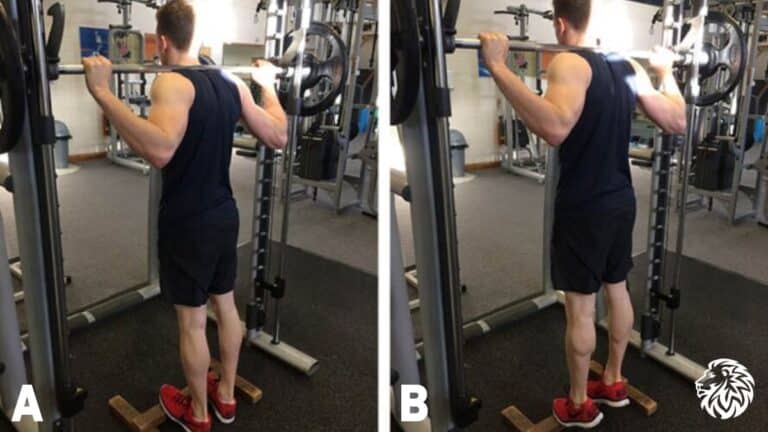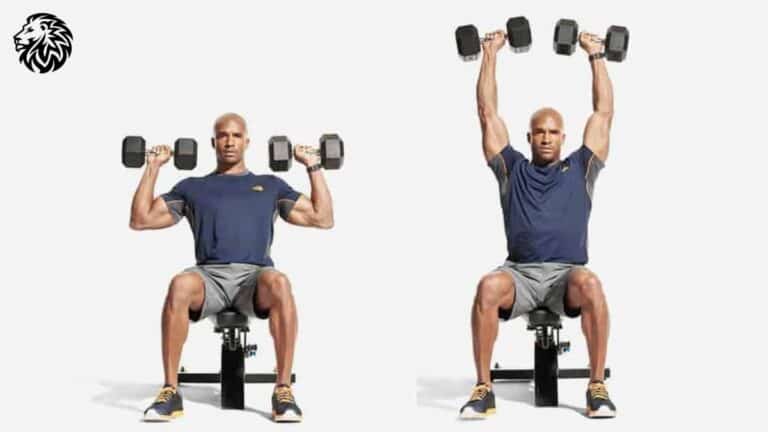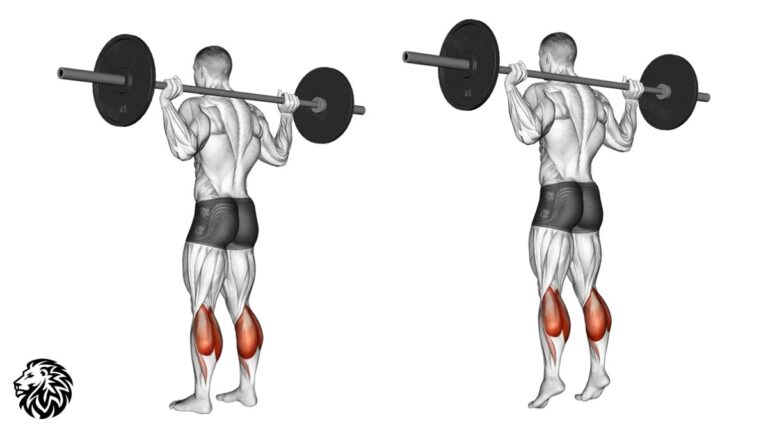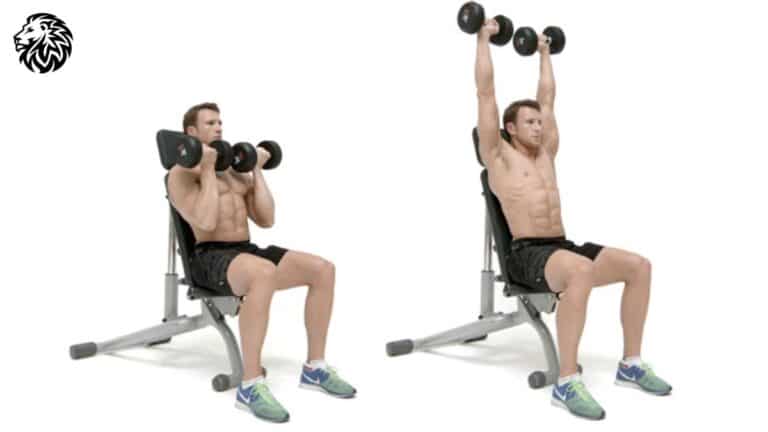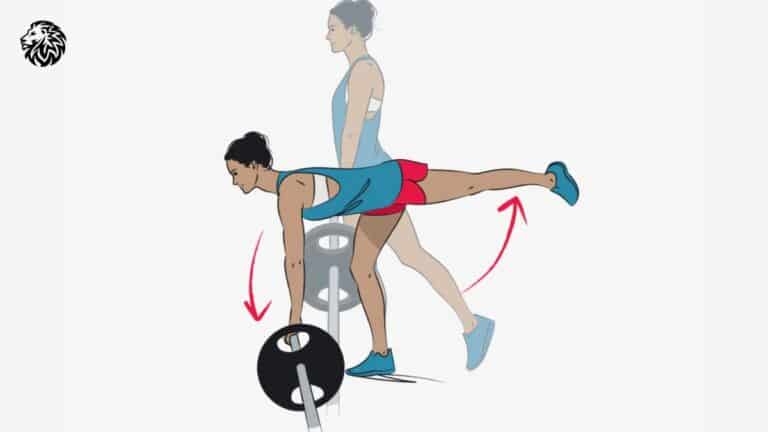Box jumps are an explosive plyometric exercise that builds lower body strength, power, and agility. This movement is widely used in strength training, CrossFit, and sports conditioning. Performing box jumps correctly helps improve athletic performance and increases endurance while reducing the risk of injury. Whether you are a beginner or an advanced athlete, mastering this exercise can enhance your workouts and improve functional movement patterns.
How to Perform Box Jumps Correctly
- Set Up the Box – Choose a sturdy box with a height appropriate for your skill level. Beginners should start with a lower height (12–18 inches) and gradually increase.
- Position Yourself – Stand about a foot away from the box with feet hip-width apart and arms relaxed at your sides.
- Engage Your Muscles – Bend your knees slightly and shift your hips back into a quarter squat while keeping your chest up.
- Jump with Power – Swing your arms forward and push through your legs to jump onto the box. Focus on landing softly with your knees slightly bent.
- Land Safely – Absorb the impact by engaging your core and keeping your feet flat on the box. Avoid locking your knees.
- Step Down with Control – Instead of jumping back down, step down one foot at a time to reduce impact on the joints.
- Repeat the Movement – Reset your stance and repeat for the desired number of repetitions.
Muscles Targeted in Box Jumps
Box jumps engage multiple muscle groups, making them a full-body workout. The primary muscles activated include:
- Quadriceps – Essential for extending the knee during takeoff.
- Hamstrings – Help drive hip extension and control landing.
- Glutes – Provide explosive power needed for the jump.
- Calves – Assist in propelling off the ground.
- Core Muscles – Stabilize the body and maintain balance during the movement.
Why Box Jumps Are Important
Box jumps improve strength, speed, and coordination, making them essential for athletic development. This exercise builds explosive power, which is necessary for sprinting, jumping, and rapid directional changes. Additionally, it enhances cardiovascular endurance, promotes calorie burn, and sharpens agility. Box jumps also stimulate fast-twitch muscle fibers, which contribute to quick and powerful movements. Incorporating them into a workout routine strengthens tendons and ligaments, reducing injury risk while increasing lower body durability. By practicing controlled landings, individuals can also improve balance, joint stability, and overall athletic performance.
Tips and Things to Avoid When Doing Box Jumps
- Start with a Low Box – A lower height ensures proper form before progressing to taller boxes.
- Land Softly – Avoid landing with stiff knees or a loud impact, as this can strain joints.
- Use Your Arms – Swinging your arms adds momentum and helps with a smooth jump.
- Engage Your Core – Keeping your core tight improves stability and control.
- Do Not Rush – Perform controlled jumps rather than prioritizing speed over technique.
- Avoid Jumping Down – Stepping down prevents excessive stress on the joints and reduces injury risk.
Reps and Sets for Box Jumps
| Fitness Level | Reps | Sets | Rest Time |
|---|---|---|---|
| Beginner | 6-8 | 3 | 60 sec |
| Intermediate | 10-12 | 4 | 45 sec |
| Advanced | 12-15 | 4-5 | 30 sec |
Other Exercises to Pair with Box Jumps
To complement box jumps, incorporate exercises that build power, strength, and endurance. Some great options include:
- Squats – Strengthen leg muscles and improve jumping mechanics.
- Lunges – Increase single-leg stability and lower-body strength.
- Deadlifts – Build explosive power in the posterior chain.
- Jump Rope – Improve foot speed and coordination.
- Burpees – Enhance cardiovascular fitness and endurance.
- Step-Ups – Target similar muscle groups while reducing impact.
Final Thoughts on Box Jumps
Box jumps are a highly effective exercise for developing power, endurance, and overall athleticism. When done correctly, they strengthen key muscle groups, enhance coordination, and improve cardiovascular fitness. To maximize benefits, start with proper form, use an appropriate box height, and gradually progress as strength and confidence increase. By adding box jumps to a workout routine, individuals can boost their performance in sports, fitness, and daily activities.
Frequently Asked Questions About Box Jumps
1. How high should my box be for box jumps?
Beginners should start with a 12- to 18-inch box, while advanced athletes can use 24 inches or higher.
2. How often should I do box jumps?
Two to three times per week is ideal, depending on your training goals and recovery ability.
3. Are box jumps safe for beginners?
Yes, as long as proper form is maintained and a lower box is used initially.
4. Can box jumps help with weight loss?
Yes, they burn calories and improve cardiovascular endurance, making them effective for fat loss.
5. Should I step down or jump down after landing?
Step down to reduce the impact on joints and minimize injury risk.
